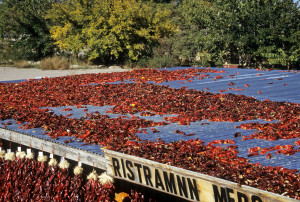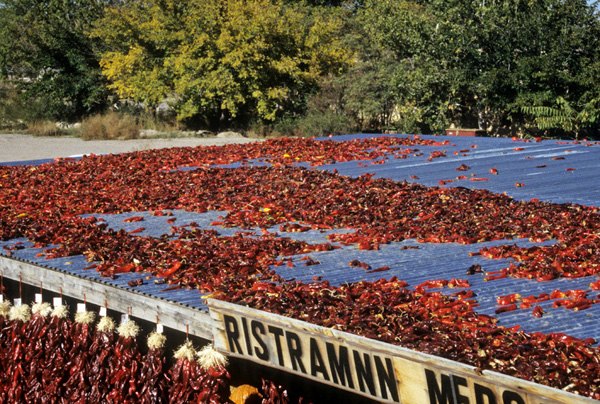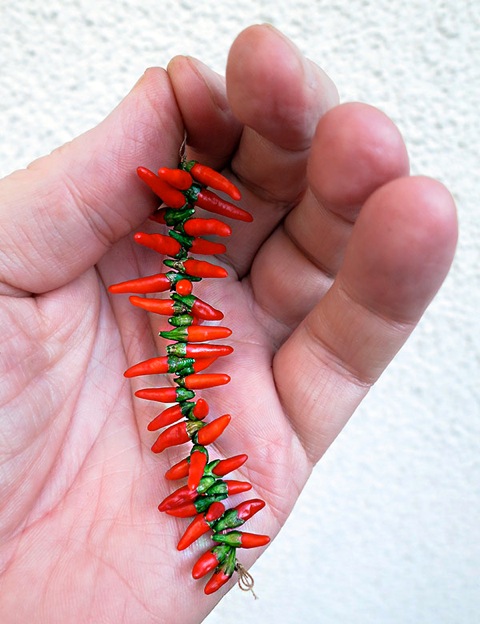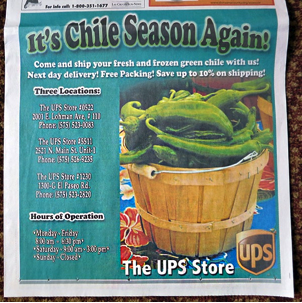
Ready for drying.
Most of us are harvesting our chile bounty right now. If you’re new, the big question confronting you is what to do with all of these pepper pods. Smoke ’em? Dry ’em? Give them away? There’s plenty of information on what to make of pods here but if powder is your poison, here’s what you can do according to the pope.
When turning fresh pods into powders, use a food dehydrator to dry them out before grinding them. If they are dry enough to snap in half and not bend, then they are ready for grinding.
Although whole pods keep best because they best retain color and flavor, another way to store peppers is to grind them into powders. All dried chiles can be ground into powder–and most are, including the habanero. Remember, though, that chile powders oxidize more easily than pods, so the must be stored properly. Crushed chiles, or those coarsely ground with some of the seeds are called quebrado. Coarse powders are referred to as caribe, while the finer powders are termed molido. The milder powders, such as New Mexican, can also be used as the base for sauces, but the hotter powders such as cayenne and piquin are used when heat is needed more than flavor.
The pods should be dried and the seeds removed for more pure powder colors. A short-cut for drying pods that will be immediately turned into powder is to cut the fresh pods of any size in half, remove the seeds, chop them coarsely, and then microwave small amounts on low power until most of the moisture is gone. Place these microwaved pepper pieces in a food dryer or under the sun until they break when bent. They can also be dried in a 200 degree F. oven for six to eight hours. Remember that drying fresh peppers in the oven for long periods of time tends to darken them, and they have a tendency to lighten under full sun. The next step is to grind the peppers into powders. The fresher the powders, the better they taste, so don’t grind up too many pods. Use an electric spice mill and be sure to wear a painter’s mask to protect the nose and throat from the pungent powder. Many cooks experiment by changing the powders called for in recipes.
Adventurous cooks can experiment with creating powders of specific colors. For example, collect the different varieties of green, yellow, orange, red, and brown chiles and separate them into their respective colors. The colors of the powders vary from a bright, electric red-orange (chiltepins), to light green (dried jalapeños), to a dark brown that verges on black (ancho). The colored powders can then be combined with spices, as in our recipe for Chili Powder (this chapter), or they can be stored for later use. Another use for the powders is to turn them into green, yellow, orange, red, or brown chile pastes. Since some of the colors of the powders tend to be a bit dull, they can be brightened up by adding a few drops of the appropriate food coloring when making the pastes. In some kitchens, there are more powders available than the whole pods because the powders are concentrated and take up less storage space. Store the powders in small, airtight bottles.
Latest posts by Mark Masker (see all)
- 2024 Scovie Awards Call for Entries - 07/07/2023
- 2024 Scovie Awards Early Bird Special: 3 Days Left - 06/29/2023
- 2024 Scovie Awards Early Bird Deadline Looms - 06/25/2023











